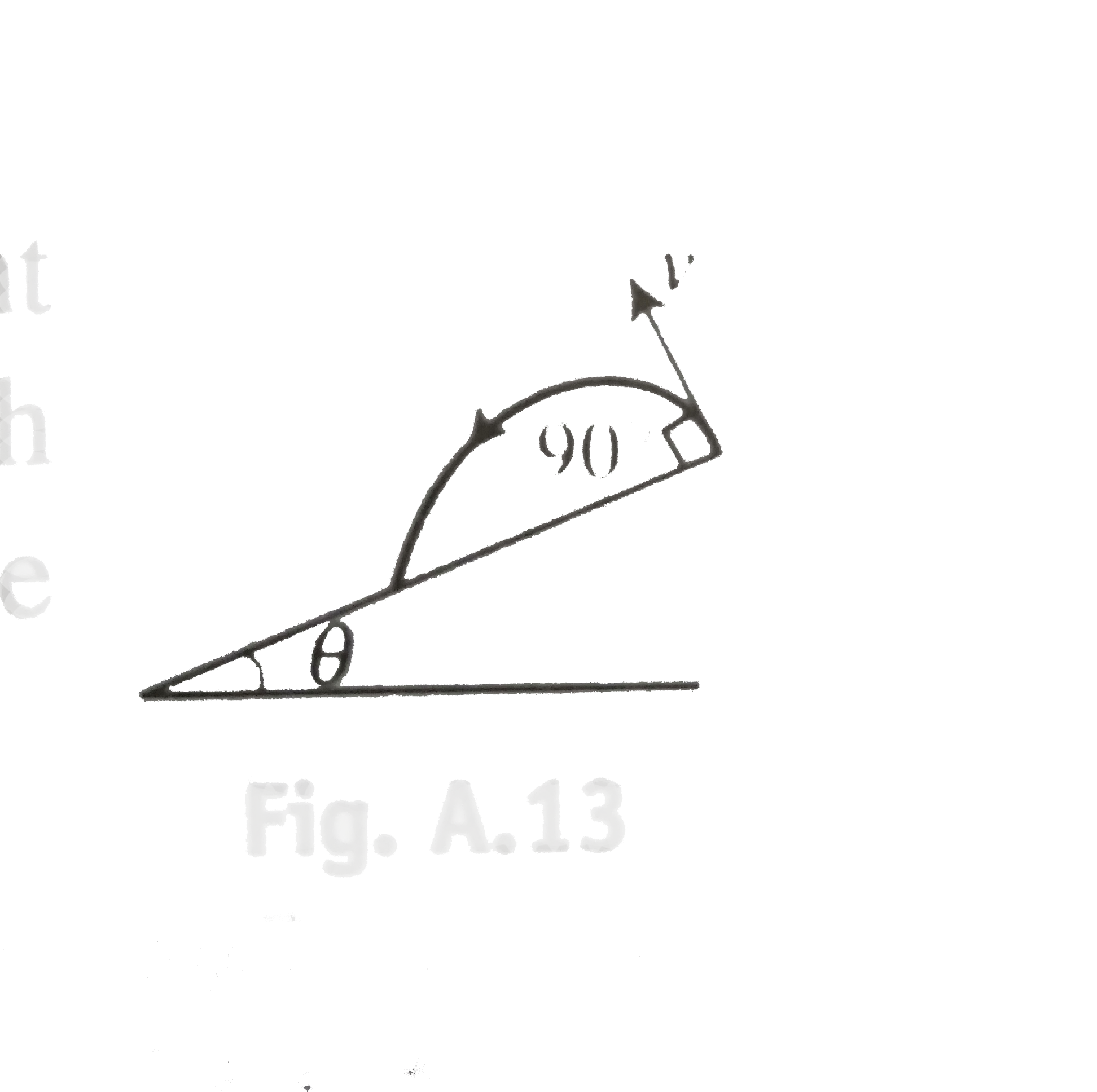A projectile fired with initial velocity u at some angle θ has a range R . If the initial velocity be doubled at the same angle of projection, then the range will be
2R
R/2
R
4R
The correct Answer is:D
To solve the problem, we will analyze the relationship between the initial velocity of a projectile and its range.
1. Understanding the Range Formula:
The range R of a projectile launched with an initial velocity u at an angle θ is given by the formula:
R=u2sin(2θ)g
where g is the acceleration due to gravity.
2. Initial Conditions:
In the initial scenario, the range is denoted as R:
R=u2sin(2θ)g
3. Doubling the Initial Velocity:
Now, if the initial velocity is doubled, the new initial velocity u′ becomes:
u′=2u
The angle of projection remains the same, θ′=θ.
4. Calculating the New Range:
We need to find the new range R′ with the new initial velocity:
R′=(u′)2sin(2θ′)g
Substituting u′=2u and θ′=θ:
R′=(2u)2sin(2θ)g
Simplifying this:
R′=4u2sin(2θ)g
5. Relating New Range to Initial Range:
Notice that the term u2sin(2θ)g is exactly the original range R:
R′=4⋅u2sin(2θ)g=4R
6. Conclusion:
Therefore, when the initial velocity is doubled, the new range R′ becomes:
R′=4R
Final Answer:
The new range when the initial velocity is doubled at the same angle of projection is 4R.
The range R of a projectile launched with an initial velocity u at an angle θ is given by the formula:
R=u2sin(2θ)g
where g is the acceleration due to gravity.
In the initial scenario, the range is denoted as R:
R=u2sin(2θ)g
Now, if the initial velocity is doubled, the new initial velocity u′ becomes:
u′=2u
The angle of projection remains the same, θ′=θ.
We need to find the new range R′ with the new initial velocity:
R′=(u′)2sin(2θ′)g
Substituting u′=2u and θ′=θ:
R′=(2u)2sin(2θ)g
Simplifying this:
R′=4u2sin(2θ)g
Notice that the term u2sin(2θ)g is exactly the original range R:
R′=4⋅u2sin(2θ)g=4R
Therefore, when the initial velocity is doubled, the new range R′ becomes:
R′=4R
The new range when the initial velocity is doubled at the same angle of projection is 4R.
Topper's Solved these Questions
- MOTIONBook:DC PANDEY ENGLISHChapter:MOTIONExercise:Check Point 4.3
Explore 10 Videos
- MOTIONBook:DC PANDEY ENGLISHChapter:MOTIONExercise:A. Taking it together
Explore 1 Video
- MOTIONBook:DC PANDEY ENGLISHChapter:MOTIONExercise:Check Point 4.1
Explore 15 Videos
- MEASUREMENT AND ERRORSBook:DC PANDEY ENGLISHChapter:MEASUREMENT AND ERRORSExercise:Subjective
Explore 19 Videos
- MOTION IN A PLANEBook:DC PANDEY ENGLISHChapter:MOTION IN A PLANEExercise:(C )Medical entrances gallery
Explore 32 Videos
Similar Questions
A projectile has a time of flight T and range R. If the time of flight is doubled, keeping the angle of projection same, what happens to the range ?
View SolutionA projectile is fired with a velocity v at right angle to the slope inclined at an angle θ with the horizontal. The range of the projectile along the inclined plane is

View SolutionThe velocity at the maximum height of a projectile is half of its initial velocity of projection. The angle of projection is
View SolutionA ball of mass m is projected from the ground with an initial velocity u making an angle of θ with the vertical. What is the change in velocity between the point of projection and the highest point ?
View SolutionThe velocity at the maximum height of a projectile is √32 times the initial velocity of projection. The angle of projection is
View SolutionWhat will be the effect on horizontal range of a projectile when its initial velocity is doubled, keeping the angle projection same ?
View SolutionIf the initial velocity of a projectile be doubled, keeping the angle of projection same, the maximum height reached by it will
View SolutionA projectile thrown with an initial speed u and the angle of projection 15∘ to the horizontal has a range R. If the same projectile is thrown at an angle of 45∘ to the horizontal with speed 2u, what will be its range ?
View SolutionA projectile is fired from the origin with a velocity v0 at an angle θ with x-axis. The speed of the projectile at an altitude h is .
View SolutionA body projected horizontally with a velocityv from a height h has a range R.With what velocity a body is to be projected horizontally from a height h/2 to have the same range ?
View Solution